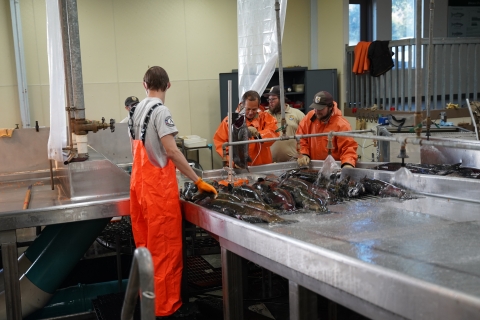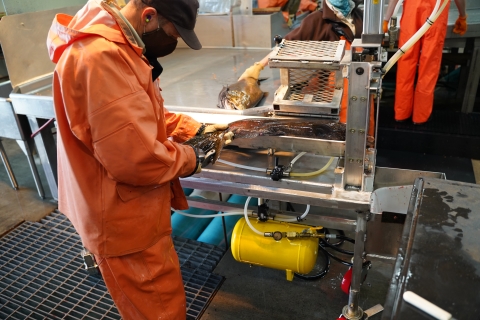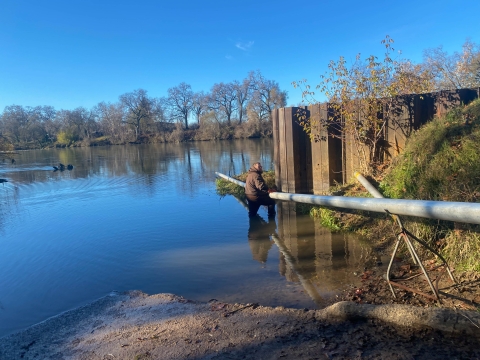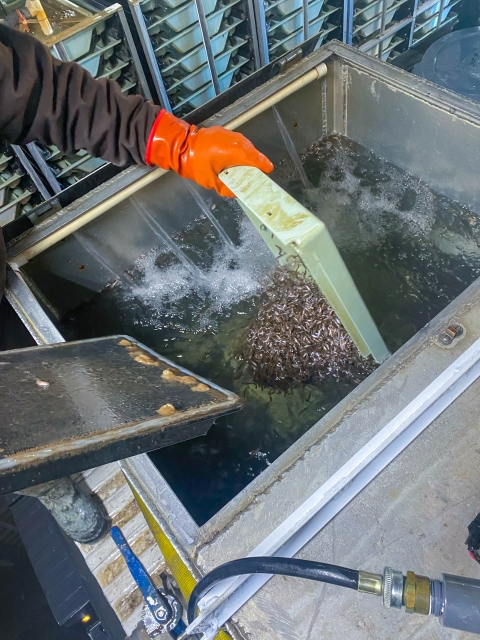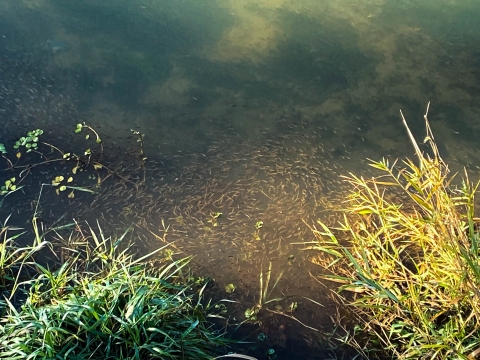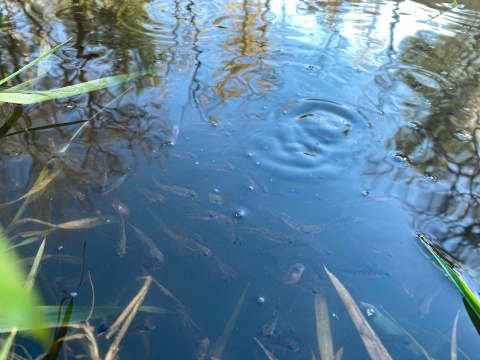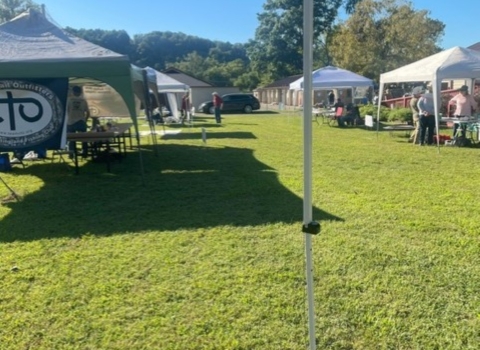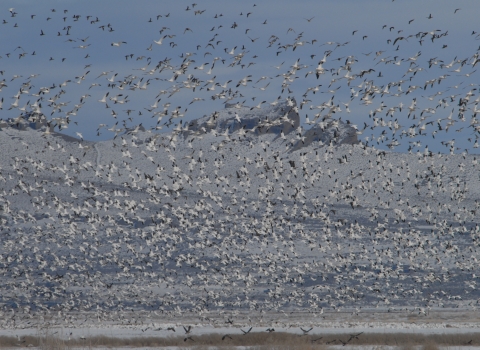Success on the first try. That’s what transpired this past December and January, when the Coleman National Fish Hatchery transported smaller fry for release into the Sacramento River. A total of two million juvenile fall-run Chinook salmon to be exact.
“Nobody here at that Coleman has ever transported that small of fry before despite staff having a lot of experience transporting fish,” said Brett Galyean, hatchery manager and project leader with the U.S. Fish and Wildlife Service. “When you do something new, you're always just a little bit leery of the outcome, so we started off with really small loads and then as we gained confidence in our technique and watched what the fish were showing us during the transport, we upped that number throughout the day.”
With 600,000 fish successfully released on the first try on December 17, Galyean said even he was a little amazed by how well the fish adjusted right away to the river.
“I was really surprised at how well the fry swam immediately,” he said. “Most of the time when you put them in a Raceway, they go straight to the bottom and they try to ball up in safety. I watched the fry swim back in towards the boat ramp, some swim up the very shallow current in the river – so they were more active. I take that as a good thing - that they were already able to swim and navigate.
The project began, after the Golden State Salmon Association and Nor-Cal Guides and Sportsmen's Association proposed the idea to the U.S. Fish and Wildlife Service and NOAA fisheries in the spring of 2021.
From there, the process started with spawning of male and female fish for three consecutive days totaling 525 fish. During that process each fish was fin punched (tissue sample taken) for genetic sampling. That way, when the adult fish return in late 2023, biologists will be able to match genetics to the database to begin to determine success.
“It is a little nerdy and CSI-like,” Galyean said of the DNA process.
After spawning, biologists have the painstaking efforts of enumeration which involves removing the dead eggs from the live ones to prevent fungus from suffocating the good eggs. This is done two months after spawning in a stage called ‘eyed’ when they begin to develop eyeballs.
“This is another example of the Coleman National Fish Hatchery trying to develop different tactics to increase salmon runs back to the north state,” said Galyean. “Another tool in the toolbox.”
The next step is the release of the fish which has its own set of challenges. High water levels can be good for the fish, but harder for the hatchery staff.
“Higher water – better for the fry being released, but then there is that safety concern with your staff having to wade out and try and set up this 20-foot section of aluminum pipe on a stand, out in the river,” said Galyean. “A lower flow which would be easier for the hatchery staff, isn’t necessarily good for the fish. You are trying to balance your current conditions with what’s best for the fish without minimizing your staff’s safety.”
With the fish released into the upper Sacramento River as fry, the hope is they will imprint as they rear and then return to spawn in the upper Sacramento as adults. With a steady decline in natural spawning in the upper Sacramento River over the past decade, this study is an attempt to determine if hatchery-produced fish can be used to increase the natural spawning population.
“This project will allow us to study the potential of generating additional adult returns to spawn naturally in the Sacramento River by releasing fry,” said Paul Souza, Regional Director for the Service’s California Great Basin Region. “We’re excited to provide these additional salmon to increase recreational opportunities for fishermen and women here in California.”
“We appreciate our partnership with the Service and NOAA Fisheries and are pleased to support this effort to increase salmon populations in the Sacramento River,” said Reclamation Regional Director Ernest Conant.
The fry will be too small at the time of their release to be clipped and tagged with conventional coded wire tags, so novel technology is being used. The tissue samples taken from each adult parent salmon will be compared to tissue taken three years from now to identify salmon by matching DNA when they return as adults. Tagging is necessary to evaluate the effectiveness of hatchery production programs, determine rates of survival, and calculate how many hatchery-spawned adults “stray” from their natal streams.
“This project is a great example of government agencies and fishing groups working together to evaluate options for addressing some of the ongoing and long-term effects of the drought that have reduced in-river salmon production and fishing opportunities. This is a model opportunity to apply creative scientific approaches for effective understanding of project benefits,” said Cathy Marcinkevage, Assistant Regional Administrator at NOAA Fisheries West Coast Region.
A key question researchers hope to answer is how many of these small salmon survive to adulthood and where will they return as adults.
“GSSA is grateful to the U.S. Fish and Wildlife Service and Coleman National Fish Hatchery for doing this work which may lead to increased wild spawning in the Sacramento River, thereby adding more fish,” said John McManus, president for the Golden State Salmon Association. “It will be a tremendous benefit.”
“In recent years in-river salmon fishing has been extremely challenging and we are very hopeful that these additional releases will increase inland recreational angler opportunities,” said Nor-Cal Guides and Sportsmen's Association President James Stone, who represents river guides and the recreational angling community. “We thank the Service for investigating whether some alternative rearing techniques can make meaningful contributions to our ocean and in-river returning fish populations.”
Galyean, who has managed Coleman for five years, said he had a chance to interact with fisherman and other stakeholders while out on the site releasing the fish.
“The fisherman out there were very interested in what we were doing, so it is a great opportunity to communicate with the public. Everyone was so accommodating of sharing the boat ramp with the hatchery vehicles and release pipes.”



